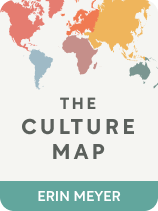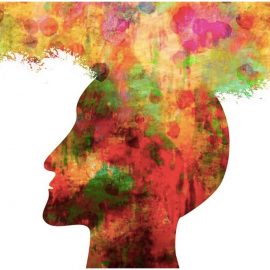

This article is an excerpt from the Shortform book guide to "The Culture Map" by Erin Meyer. Shortform has the world's best summaries and analyses of books you should be reading.
Like this article? Sign up for a free trial here .
What is a cultural mindset? What is the main difference between the Western and the Asian way of thinking?
In every culture, there is a prevalent way of thinking and reasoning about the world. In her book The Culture Map, Erin Meyer divides Asian and Western thinking into two broad categories of thought.
In this article, we’ll look at Meyer’s two categories of cultural mindset: dialectical and analytical.
The Dialectical Mindset
In cultures that think dialectically, people tend to focus on the overall situation. Instead of focusing on individual elements, they emphasize the relationships between individual elements.
Meyer cites several studies by Professors Richard Nisbett and Takahiko Masuda that illustrate this discrepancy. In one study, they asked both Japanese and American people to “take a photo of a person.” Photos taken by Americans tended to be close-ups, while photos taken by Japanese people depicted much more of the background. When asked, the Japanese person thought that the Americans had taken a photo of a face, not a person. In contrast, the Americans thought that the Japanese had taken a photo of a room, not a person. (Shortform note: When we replicated this study informally, we got the same results: The American took a photo of the face, while the Japanese person took a full-body photo. When asked about her photo, the Japanese person said: “If I had to describe a person to an alien, how could I do so with just a close-up of the face? I need the full body.” This was not something the American had considered at all.)
In business, this focus on relationships is evident in longer responses to questions. People might present related information first before getting to their answers. As such, people from other cultures might find that dialectical thinkers are missing or unable to find the point. At worst, they might think dialectical thinkers are doing so deliberately.
According to Meyer, most Asian cultures think dialectically.
How Dialectical Thinking Develops
According to Meyer, cultures developed different ways of thinking due to the philosophies that dominated their culture.
She argues that the dialectical thinking of Asian countries derives from the Chinese philosophies that influenced them. Meyer states that Chinese philosophies tend to value harmony and balance between individual elements. Additionally, Meyer notes that Chinese philosophies don’t separate an act or object from the circumstances surrounding it. Rather, they consider both in concert.
She gives the example of the Chinese concept of yin and yang as support for both these ideas. Yin and yang are related to balance because they represent how dueling concepts like light and dark can actually be complementary. But they’re also related to holistic thinking because they must both exist—one can’t exist without the other.
(Shortform note: Although Meyer notes that yin and yang were developed by Taoists and influenced Confucian philosophies, she doesn’t mention that each philosophy favored a particular element of the yin-yang duality. The Taoists, whose philosophy emphasized seclusion, preferred the feminine yin, while Confucianism, which is primarily focused on the relationships in public life, favored the masculine yang.)
The Analytical Mindset
In cultures that think analytically, people tend to focus on the individual element or action. Unlike dialectical cultures, they de-emphasize the surrounding circumstances.
(Shortform note: In business, this might be seen in how they evaluate risk. Researchers argue that analytical thinkers “typically expect states of the world to be stable.” This could be because they focus on the individual element. Furthermore, “when change is occurring, such as a stock growing in value, change is presumed to follow a linear trend”—to the point where Canadians sold falling stocks and bought rising stocks, but Chinese people (perhaps counterintuitively to the Western mind) bought falling stocks and sold rising stocks because they assumed the change wouldn’t continue.)
Meyer states that a common criticism of analytical thinkers is that they ignore the overall context too much. Critics think analytical thinkers can’t see the overarching influences on their thoughts or the potential broader impacts of their actions, so they must be incompetent. Critics might also just think they’re rushing and ignoring those influences.
(Shortform note: As you go through this section, it’s important to remember what analytical thinking means in a cultural context. Many people interpret the phrase analytical thinking as thinking with an emphasis on structure, mathematics, or logic. But the key feature of analytical thinking is the tendency to consider something individually, de-emphasizing its relationship with the environment. It’s not a tendency to view something through a more mathematical lens.)
Why Analytical Thinking Develops
Meyer argues that the analytical thinking of Western countries derives from elements of Western philosophy.
Specifically, she states that Western philosophies assess objects independently without necessarily considering them in the overall context. As an example, Meyer describes how Aristotle ascribed the principles of levity and gravity to particular items—a falling rock had the property of “gravity,” while a floating log had the “levity” property. Rather than viewing “levity” as an interaction between the log and its environment, he saw it as a property of the log itself.
(Shortform note: Since this example comes from Aristotelian physics, it may not seem to support Meyer’s claim that philosophy influences culture. But Aristotle didn’t differentiate between physics and philosophy—he and his contemporaries studied “natural philosophy,” which encompassed both physics and philosophy. The two disciplines were indistinguishable until the development of natural science in the 19th century.)
Meyer argues that this common Western tendency to consider objects independently—as items with characteristics and not in relation to one another or to external forces—is the root of modern-day analytical thinking: Today’s Western businesspeople assess elements independently because their religions and philosophies did so, too.
(Shortform note: Another possible explanation for the difference in cultural mindset patterns is the “social orientation hypothesis.” It suggests that cultures that prize independence tend to think analytically, while cultures that prize interdependence tend to think dialectically. Researchers found that when Mexican farmers became more capitalist and thus more independent, they also thought more analytically.)

———End of Preview———
Like what you just read? Read the rest of the world's best book summary and analysis of Erin Meyer's "The Culture Map" at Shortform .
Here's what you'll find in our full The Culture Map summary :
- The eight axes you can use as a framework to analyze cultural differences
- How to better relate to those of another culture to accomplish business goals
- How the Vikings have more gender equality than we see today






